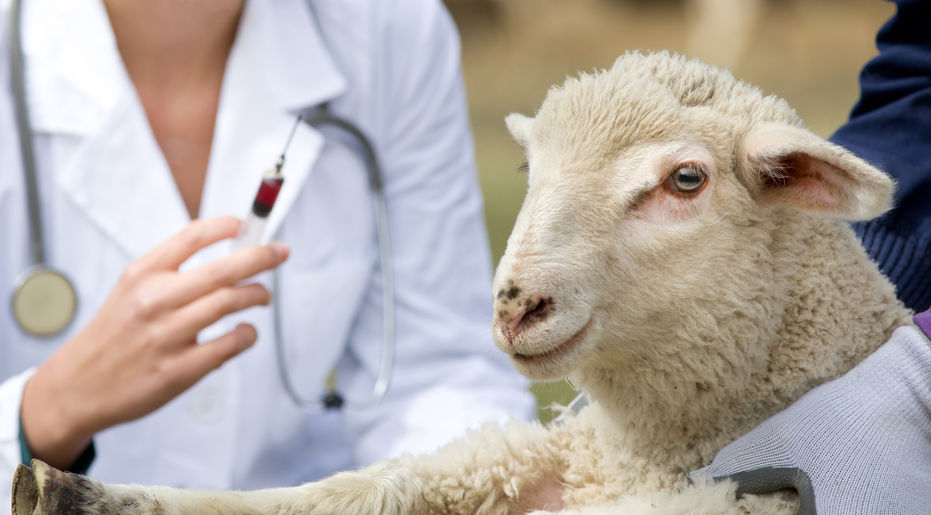
A new industry-wide campaign has commenced which aims to highlight the importance of vaccinations in helping protect animal health and welfare.
The #VaccinesWork campaign is running from September to the end of October, and will explore the role vaccines can play in helping to protect health and welfare in all farm animal sectors.
The campaign also seeks to support reductions, replacements or refinements in antibiotic use.
In particular, it will highlight the differences in vaccine penetration between farm animal sectors, highlighting where there may be scope for greater uptake, as well as the gains to be made from storing, handling and administering vaccines correctly.
The Responsible Use of Medicines in Agriculture (RUMA) Alliance, which is co-ordinating the campaign, says the poultry sector has successfully used vaccines for a number of years within comprehensive and integrated health programmes.
With considerable achievements in antibiotic stewardship under its belt, it’s hoped other sectors will take inspiration from this.
“Vaccination is not a ‘silver bullet’ for disease control, but it can be an important part of an infection prevention and control of disease planning process, which all farms should have in place in consultation with their vet,” explained RUMA’s secretary general, Chris Lloyd.
“In the sheep and cattle sectors, uptake of vaccines is generally low, so the campaign will ask farmers and prescribers to consider whether there is scope to increase levels of vaccination to improve herd or flock immunity – and potentially profitability – on their farms.
“Vaccination is already much higher in pigs, but improving how vaccines are stored, handled and administered could boost results significantly,” he said.
Mr Lloyd points out that more than 50 vaccines are currently available for both cattle and pigs to treat a wide range of bacterial, viral and protozoal diseases, and almost 30 for sheep.
“We want to ask whether we are really making best use of the protection these could offer,” he said.
Figures from 2016 suggest only 17% of cattle that could be vaccinated against Bovine Respiratory Disease (BRD) were given vaccine despite half of herds being affected.
And just 22% of cattle received the vaccine for the virus that causes Infectious Bovine Rhinotracheitis (IBR) despite the disease being present in 70% of herds.
'Hotspot areas'
The sheep industry faces similar challenges. Just 42% of sheep farmers are currently vaccinating against clostridial diseases and pasteurellosis, two of the most common preventable diseases causing death in sheep and lambs.
And only 36% are vaccinating for enzootic abortion and 22% for toxoplasmosis, which are responsible for more than three-quarters of abortions or stillbirths between them.
Specialist sheep veterinarian Fiona Lovatt says vaccination against both abortion and footrot are key elements of the sector’s plans to tackle ‘hotspot’ areas of antibiotic use in what is a relatively low-use sector.
But she said farmers will need to move quickly if they want to improve protection against abortion for the coming season.
“Ewes need to be vaccinated four weeks before the tups are turned out,” she explained, “so farmers need to act quickly to protect their ewes and prevent abortions at their next lambing.
“Everyone who buys in ewes is at risk of enzootic abortion and by far the best protection – as well as the most cost-effective – is to vaccinate ewes before they go to the tup for the first time.”
'Poor practice'
Pigs have far higher uptake of vaccines than cattle and sheep, with 90% of all eligible pigs being vaccinated for Porcine Circovirus (PCV2) and around 70% for Mycoplasma hyopneumoniae. Vaccination for Porcine Reproductive & Respiratory Syndrome (PRRS), known as Blue Ear, is also common.
But Mandy Nevel from AHDB Pork says that while uptake of vaccines is high, this doesn’t guarantee the vaccines will work as well as they could.
She said: “It’s good news that vaccines are so well-used, but the number of animals involved means vaccination is not an easy job. It can be stressful to handlers and animals, leading to short cuts and poor practice.
“A failure to correctly follow storage, administration and vaccine course instructions can undermine the efficacy of the vaccine which can mean they do not work as well as they can.
“This may include incorrect storage temperatures – especially freezing – as well as expired use-by dates and failure to deliver the full course.
Ms Nevel added: “This is why – for pigs – the #VaccinesWork campaign will be encouraging producers to look at what could be stopping them and their employees making the most of their vaccination programmes.”
In order to ensure prescribed vaccines work effectively, it is essential that the manufacturer and prescriber’s instructions on storage, dose rate and dose interval are followed accurately.
